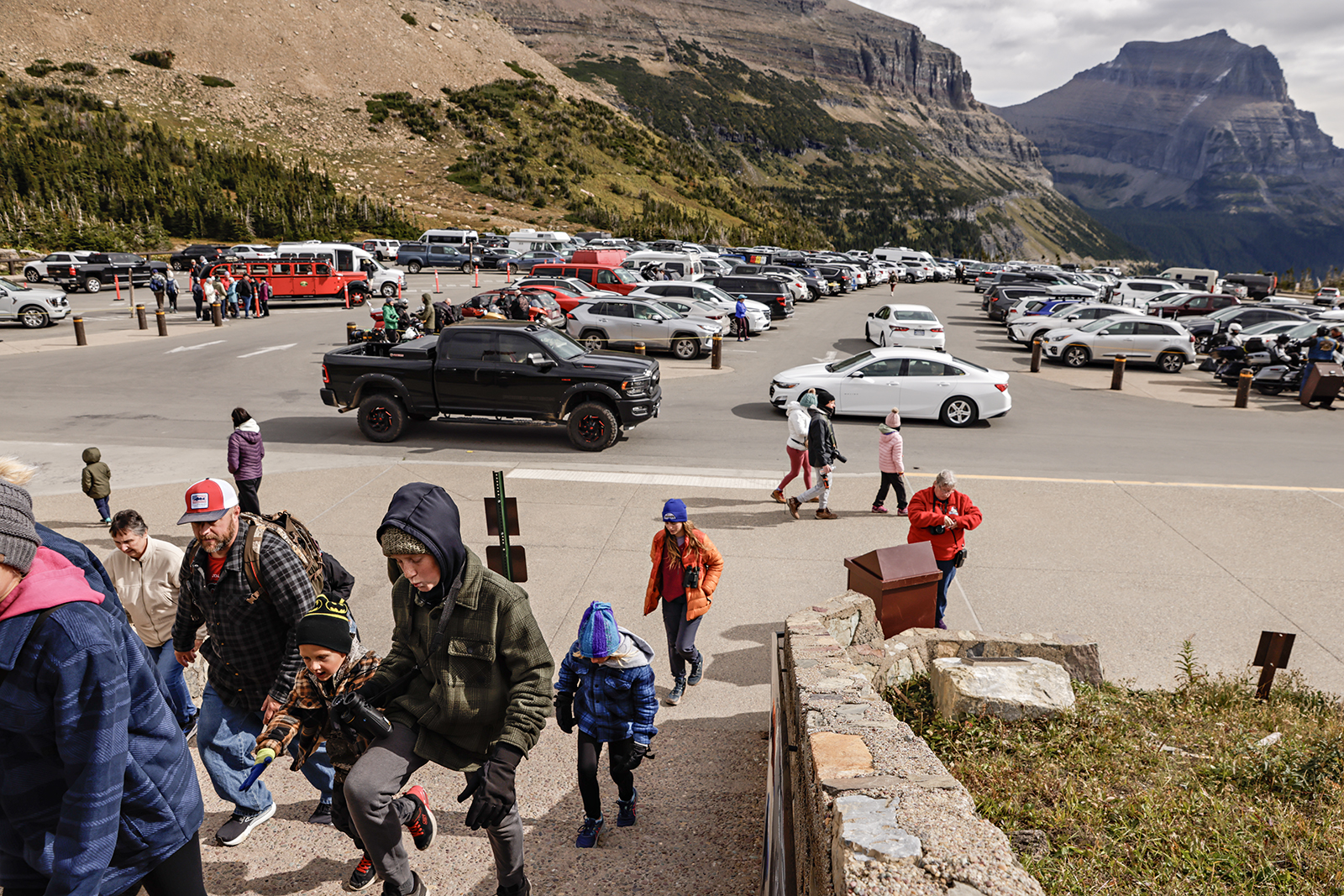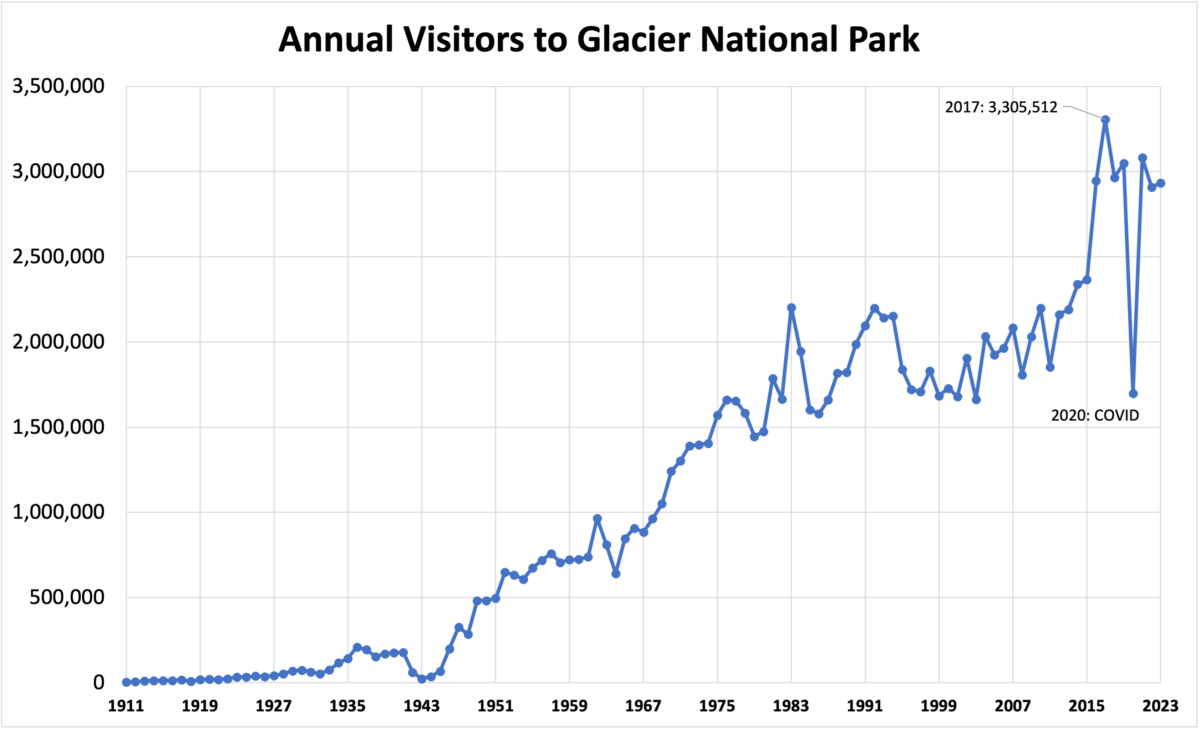Glacier National Park Shatters Visitation Record for September
New year-to-date data shows the park exceeded 3 million visitors through September, ushering 602,339 people through the park’s entrances last month for the busiest September on record
By Tristan Scott
After lifting its ticketed-entry requirement on the Going-to-the-Sun Road on Sept. 9, Glacier National Park went on to record its busiest September in history, according to recently compiled visitation data, which registered 602,339 visits last month.
Park officials report ushering 3,004,613 visitors through Glacier’s gates in the nine-month period through September, amounting to the most visitors recorded in that time frame since 2017, when the park set its overall visitation record (3,321,319 people) and registered 3.206 million people before October.
This year’s data revealed a nearly 9% increase in visitors, or 47,774 people, compared to last year’s figures, which wasn’t surprising to park administrators.
Reflecting on the report at a townhall on sustainable tourism in Whitefish Wednesday night, Glacier Park Superintendent Dave Roemer told the crowd that it “makes sense to me because all September long I was thinking this is just like August.”
In August, nearly 749,000 people visited Glacier National Park, according to the park’s visitor statistics dashboard, which tallied a nearly 15% increase in visitation in August 2024 compared to the same month the year prior.
“I know you all know our park stats page where you can see all the breakdowns for entrances,” Roemer told the audience, “but it represents both an increase at the West Entrance as well as the St. Mary entrance to Going-to-the-Sun Road, is pretty much the story.”
Visitors to the park’s West Entrance, where motorists were required to have a vehicle reservation between 6 a.m. and 3 p.m. between May 24 and Sept. 8, totaled 291,103 in September, while visitors to the St. Mary entrance, which did not require a reservation, totaled 139,780.

In the first nine months of 2024, the park’s year-to-date visitation increased by more than 9% over last year, when the statistics showed that 2,754,794 had visited the park through September.
Combined with robust early-season visitation numbers for Glacier, including a record number of visitors in May, the park’s annual visitation exceeded 3 million people for the fourth time in the park’s 108-year history.
Glacier National Park is in the fourth consecutive year of requiring a vehicle reservation for park visitors. This year, the reservation requirement is in place for the North Fork, Many Glacier and the West Entrance of Going-to-the-Sun Road. The pilot program was engineered to shunt congestion away from the park’s most popular corridors, and its applications have varied from year to year.
Brian Schott, who chairs the committee tasked with updating Whitefish’s sustainable tourism management plan, asked Roemer at Wednesday’s town hall for his observations about how visitors interacted with the reservation system this year, and whether park officials consider it a success.
“Operationally, I think it worked for us. We weren’t overwhelmed at St. Mary, so being able to maintain that as an unreserved area works well,” Roemer said. “You know, we sort of paired that with Two Medicine so that Two Med wouldn’t be off by itself as the only corner of the park that didn’t have a vehicle reservation. People who wanted to get vehicle reservations I believe can get them. I’ve heard a lot of anecdotal information that it wasn’t hard to get, but there are some people who just don’t want to deal with that. There’s like 17 percent out there who do no trip planning, and so there’s a place for those 17 percent to go — St. Mary.”
“And the changes at Apgar worked really well, too,” Roemer continued. “Being able to have that point for Going-to-the-Sun Road further in past Apgar Village, allowing access to Apgar, I thought it was going to be a disaster. It was not. I would drive out there a couple times a week to see if I could park and I usually could. So, it wasn’t too congested and operationally it worked for our staff and I think it worked for visitors, too.”
Reporter Mike Kordenbrock contributed reporting to this story.